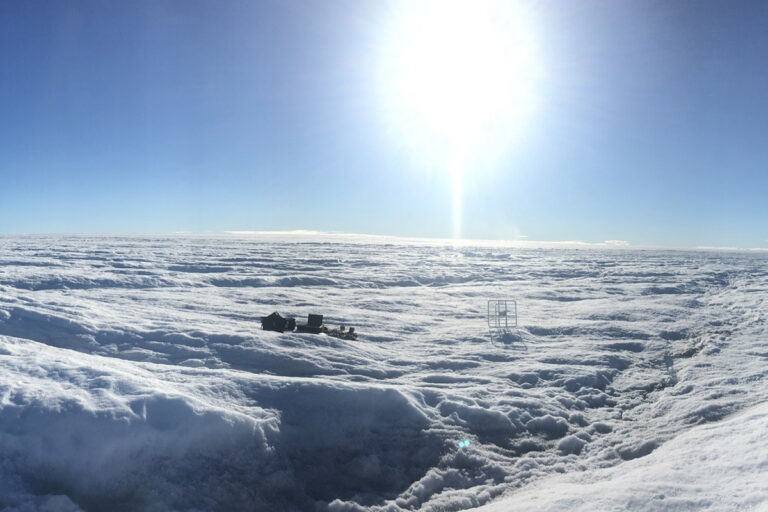A new method for seeing through ice sheets using radio signals from the sun could enable cheap, low-power and widespread monitoring of ice sheet evolution and contribution to sea-level rise.
This is the key finding from a new study by Stanford University in California, US. In the study a team of glaciologists and electrical engineers show how radio signals naturally emitted by the sun can be turned into a passive radar system for measuring the depth of ice sheets and successfully tested it on a glacier in Greenland.
The technique could lead to a cheaper, lower power and more pervasive alternative to current methods of collecting data, according to the researchers. The advance may offer large-scale, prolonged insight into melting ice sheets and glaciers, which are among the dominant causes of sea-level rise threatening coastal communities around the world.
The researchers’ proof of concept uses a battery-powered receiver with an antenna placed on the ice to detect the sun’s radio waves as they travel down to Earth, through the ice sheet and to the subsurface. According to the researchers, if this type of system were fully miniaturized and deployed in extensive sensor networks, it would offer an unprecedented look at the subsurface evolution of Earth’s quickly changing polar conditions.
“Our goal is to chart a course for the development of low-resource sensor networks that can monitor subsurface conditions on a really wide scale,” said lead study author Sean Peters, who conducted research for the study as a graduate student at Stanford and now works at the MIT Lincoln Laboratory. “That could be challenging with active sensors, but this passive technique gives us the opportunity to really take advantage of low-resource implementations.”
In their test on Store Glacier in West Greenland, the researchers computed an echo delay time of about 11 microseconds, which maps to an ice thickness of about 3,000ft – a figure that matches measurements of the same site recorded from both ground-based and airborne radar.



